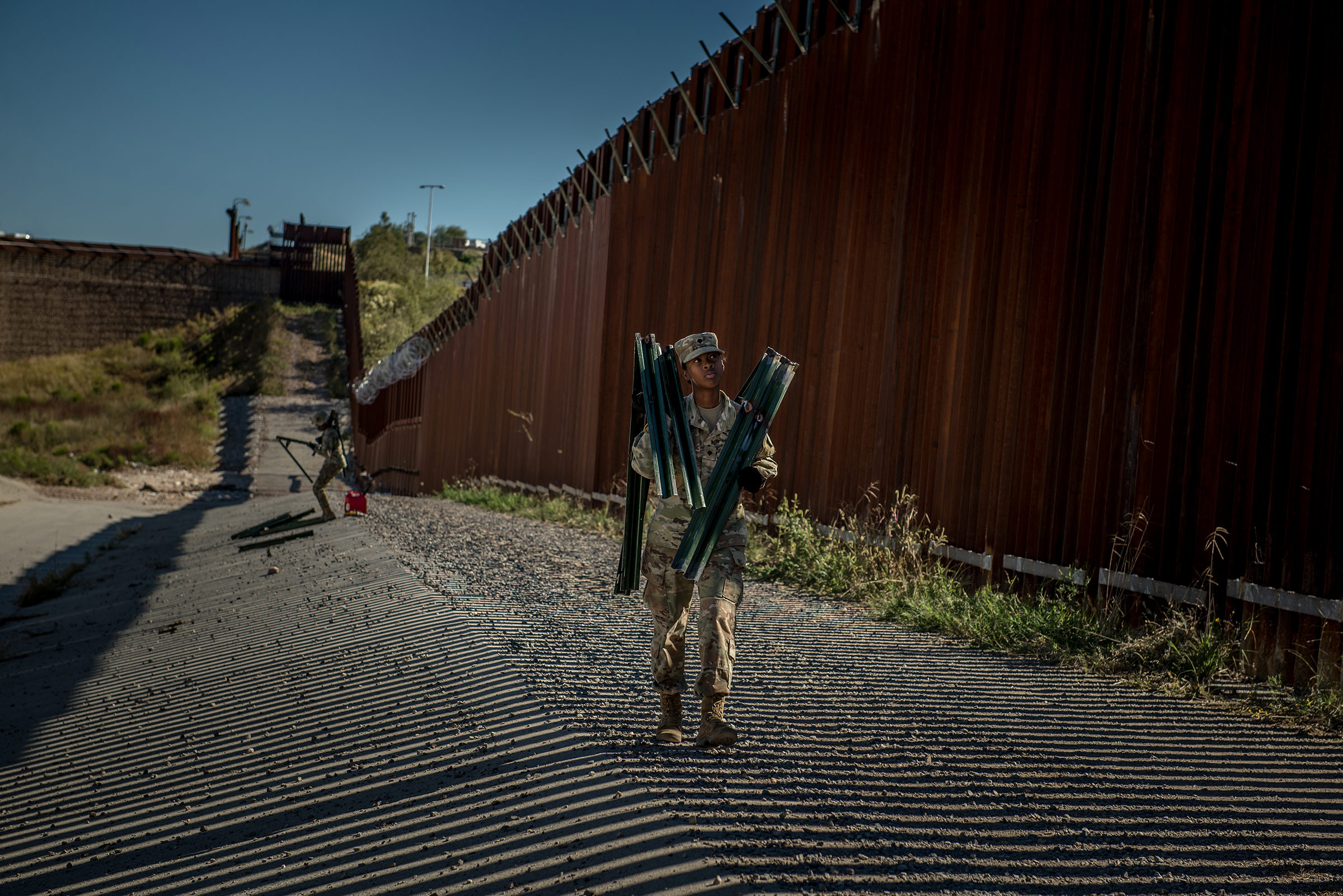
As the humanitarian crisis at the southern border has grown, the President and his allies have called for the U.S. military to be deployed in greater numbers. I commanded the U.S. Southern Command, overseeing all forces south of this country, for a few years, and I am skeptical that there is a military solution to these challenges.
In July, it was reported that the Trump Administration was calling up over 2,000 more troops to support the approximately 5,000 already on duty there. To put that in perspective, we have fewer than 1,000 troops in Syria and only 14,000 in Afghanistan, where there is a clear-cut need for such combat capability. The military can help the Border Patrol with logistical support, intelligence gathering and construction of physical barriers. But U.S. law generally prohibits the use of the military in circumstances that approach actual law enforcement. When forces under my command conducted counternarcotics patrols, for example, the law-enforcement functions had to be conducted by duly authorized personnel–U.S. Coast Guard or Drug Enforcement Administration (DEA) officers, typically.
If the military isn’t the answer, what should we be doing?
Interagency cooperation is the first key to solving this crisis. This should include work not only by the Department of Homeland Security but also by the State Department to craft diplomatic agreements with our neighbors; Treasury, Commerce and the U.S. Trade Representative to create economic incentives that would help keep migrants in their own countries; Health and Human Services to deal humanely with the migrants crossing the border; and the DEA to work the counternarcotics and gang challenges that lead to much of the migrant-driving violence. Only by harnessing the power of an integrated government can we create a holistic solution to the crisis.
We also need better international cooperation. Mexico and the nations of Central America have a substantial role to play in resolving this situation, and they can be incentivized to do more, including possibly accepting “safe third country” agreements--in which migrants wait in other countries while the U.S. asylum system adjudicates their cases. Mexico continues to reject Trump Administration pressure to accept such an agreement, understandably saying the huge backlog of cases in U.S. courts would cause migrants to remain inside its borders for three or more years. Guatemala, under intense financial pressure from the U.S., accepted one of these deals in July, although the newly elected government there has indicated a desire to renegotiate. All these countries can also help by sharing intelligence, deploying their police and ensuring their border-control forces effectively crack down on human smugglers.
The risks facing Latin American countries are significant–the financial costs of supporting migrant populations are obvious, but there is also the attendant fear of political instability as each nation grapples with an increasing number of newcomers living for a long time in uncertain circumstances. The situation in Venezuela offers a useful example: there are currently over 4 million Venezuelans in neighboring countries like Colombia and Brazil. Mexico and Central American countries see the difficulties those countries are having coping. But it’s essential that they act as good partners in getting this situation under control.
Finally, public-private partnerships can assist in not only addressing the humanitarian crisis but also tackling the root causes of migration. These have to be seeded by the U.S. government with foreign aid and tax incentives, and the recent decision to cut $500 million in aid to the Northern Triangle nations of El Salvador, Honduras and Guatemala was counterproductive. U.S. corporations and nongovernmental organizations can help produce better conditions through job creation, higher labor standards and stronger free-trade arrangements.
These strategies are far less expensive than keeping 7,000 troops on the border or building a huge, unnecessary wall. They will also ultimately be more effective. The Trump Administration’s effort to deter migrants by creating harsh conditions at the border may ease the flow in the short term, but any long-term solution will require much broader cooperation with the world to the south.
Admiral Stavridis (ret.) was the 16th Supreme Allied Commander for NATO and is an operating executive at the Carlyle Group
More Must-Reads From TIME
- The 100 Most Influential People of 2024
- Coco Gauff Is Playing for Herself Now
- Scenes From Pro-Palestinian Encampments Across U.S. Universities
- 6 Compliments That Land Every Time
- If You're Dating Right Now , You're Brave: Column
- The AI That Could Heal a Divided Internet
- Fallout Is a Brilliant Model for the Future of Video Game Adaptations
- Want Weekly Recs on What to Watch, Read, and More? Sign Up for Worth Your Time
Contact us at letters@time.com